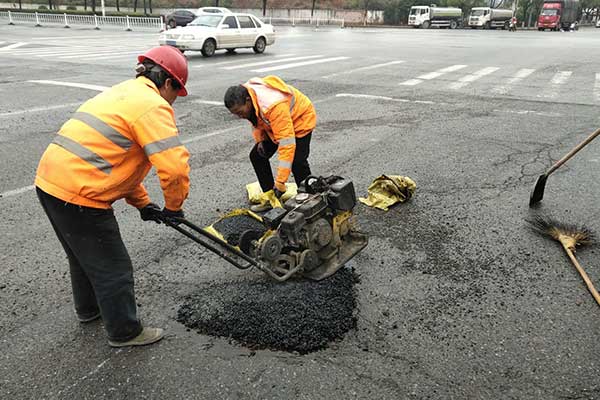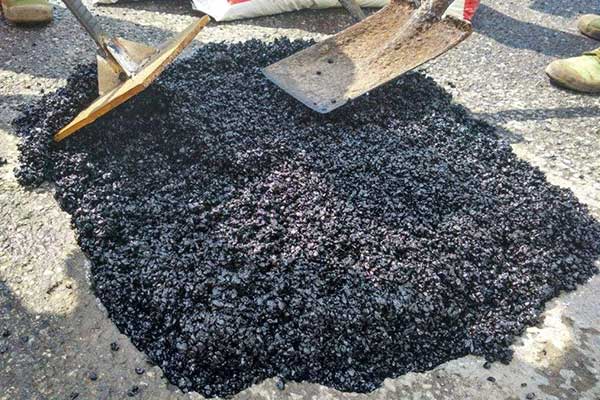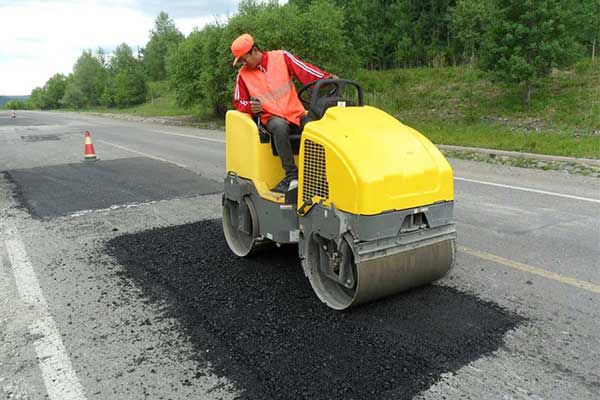Pavement Pothole Repair: Hot or Cold Asphalt Patch
Maintaining smooth and safe pavements is crucial for road safety and longevity. Over time, pavements develop cracks and potholes due to weather conditions, traffic, and natural wear and tear. Asphalt patching is a common and effective method for repairing these issues, but a crucial decision remains: should you use a hot patch or a cold patch? This article will explore the differences, benefits, and best use cases for each method to help you make an informed decision.

Understanding Asphalt Patching
Asphalt patching is the process of repairing damaged areas of pavement. This can be done using either hot or cold mix asphalt. Both methods aim to fill potholes, cracks, and other defects, restoring the pavement’s surface and structural integrity.
Hot Patch Asphalt
Hot patch asphalt involves heating the asphalt mix to a high temperature (around 300°F to 350°F) before applying it to the damaged area. This method is typically used by professional paving contractors and requires specialized equipment.
Benefits of Hot Patch Asphalt
- Durability: Hot patch asphalt creates a stronger bond with the existing pavement, making it more durable and long-lasting.
- Flexibility: The heated mix is more malleable, allowing it to fill cracks and holes more effectively.
- Load-Bearing Capacity: It can withstand heavy traffic loads better than cold patch asphalt.
Use Cases for Hot Patch Asphalt
- Major Roadways: High-traffic areas where durability is paramount.
- Long-Term Repairs: Situations where a long-lasting solution is needed.
- Large Repair Areas: Extensive damage that requires a thorough and robust repair approach.

Cold Patch Asphalt
Cold patch asphalt, on the other hand, is pre-mixed and can be applied without heating. It is often sold in bags and can be used by both professionals and DIY enthusiasts.
Benefits of Cold Patch Asphalt
- Convenience: Cold patch asphalt is easy to use and doesn’t require special equipment or heating.
- Quick Repairs: Ideal for immediate, temporary fixes.
- Cost-Effective: Generally cheaper than hot patch asphalt, making it suitable for smaller budgets.
Use Cases for Cold Patch Asphalt
- Emergency Repairs: Quick fixes to address immediate hazards.
- Low-Traffic Areas: Residential driveways and low-traffic roads.
- Temporary Solutions: When a more permanent repair is planned for later.

Comparing Hot Patch and Cold Patch
Installation Process
- Hot Patch: Requires heating equipment, precise application, and professional expertise.
- Cold Patch: Simple application process, can be done by anyone with basic tools.
Cost
- Hot Patch: Higher cost due to equipment, labor, and materials.
- Cold Patch: Lower cost, ideal for budget-conscious repairs.
Longevity
- Hot Patch: Longer-lasting and more durable, ideal for permanent repairs.
- Cold Patch: Suitable for temporary fixes; may need to be replaced more frequently.
Weather Considerations
- Hot Patch: Best applied in warmer weather for optimal results.
- Cold Patch: Can be applied in a variety of weather conditions, including winter.
Choosing the Right Method
The choice between hot and cold patch asphalt depends on several factors:
- Extent of Damage: Severe damage may require the durability of hot patch asphalt.
- Traffic Volume: High-traffic areas benefit from the robust nature of hot patch repairs.
- Budget: Cold patch asphalt offers a cost-effective solution for minor repairs.
- Urgency: For immediate, temporary repairs, cold patch is the go-to option.
Conclusion
Both hot and cold patch asphalt have their unique advantages and ideal use cases. Hot patch asphalt is the best choice for durable, long-term repairs, especially in high-traffic areas. Cold patch asphalt, meanwhile, provides a quick, convenient, and cost-effective solution for temporary or minor repairs. By understanding the strengths and limitations of each method, you can ensure that your pavement repairs are effective, timely, and within budget.

